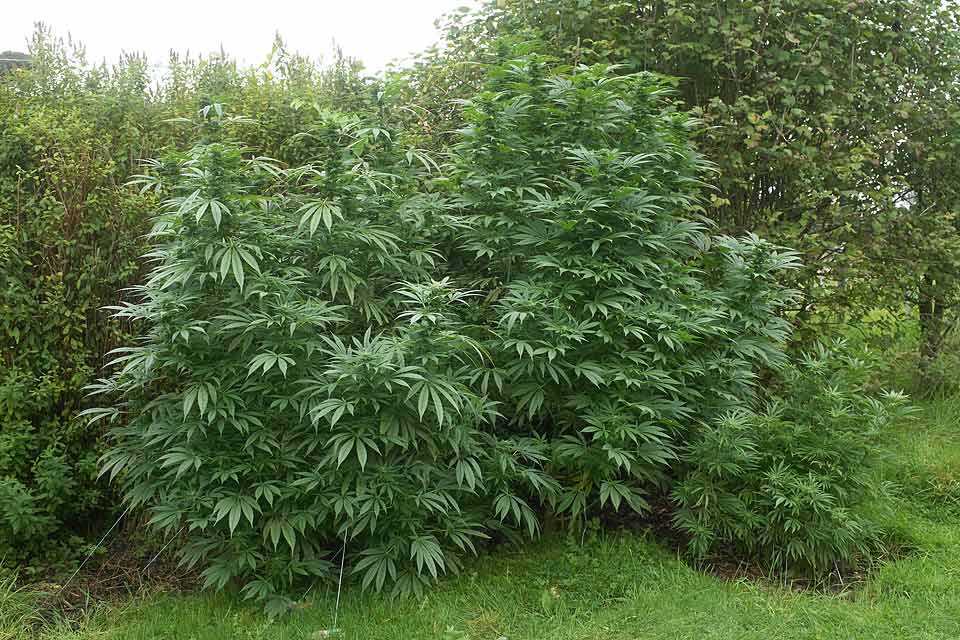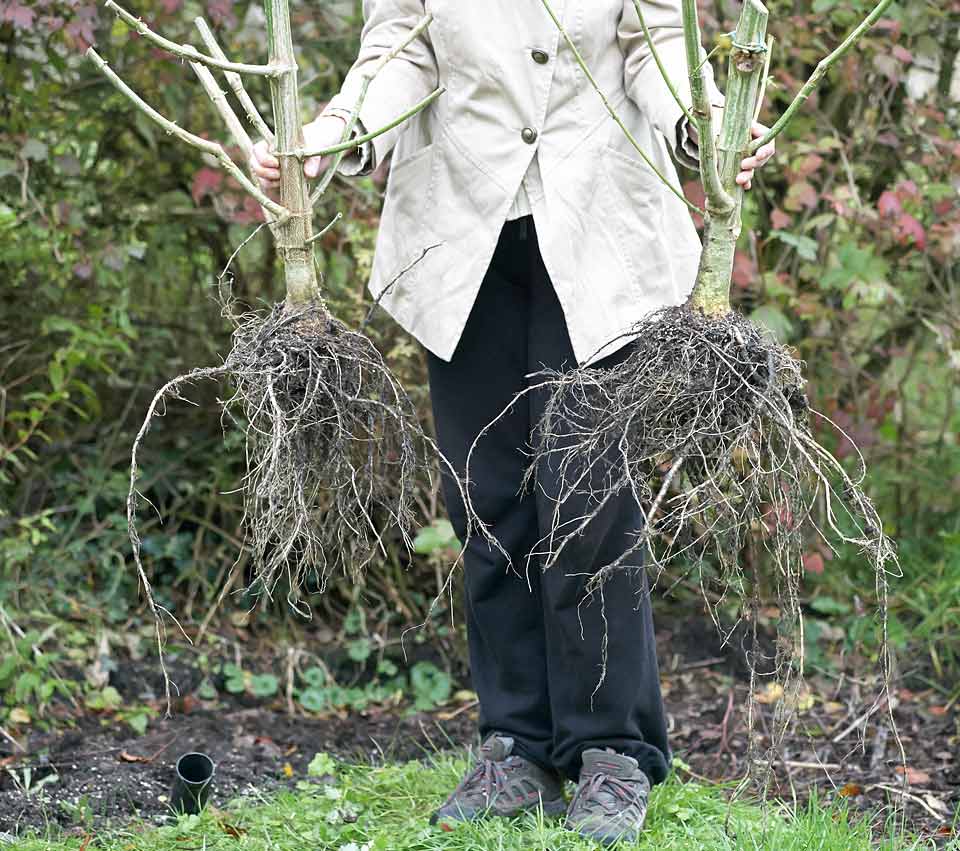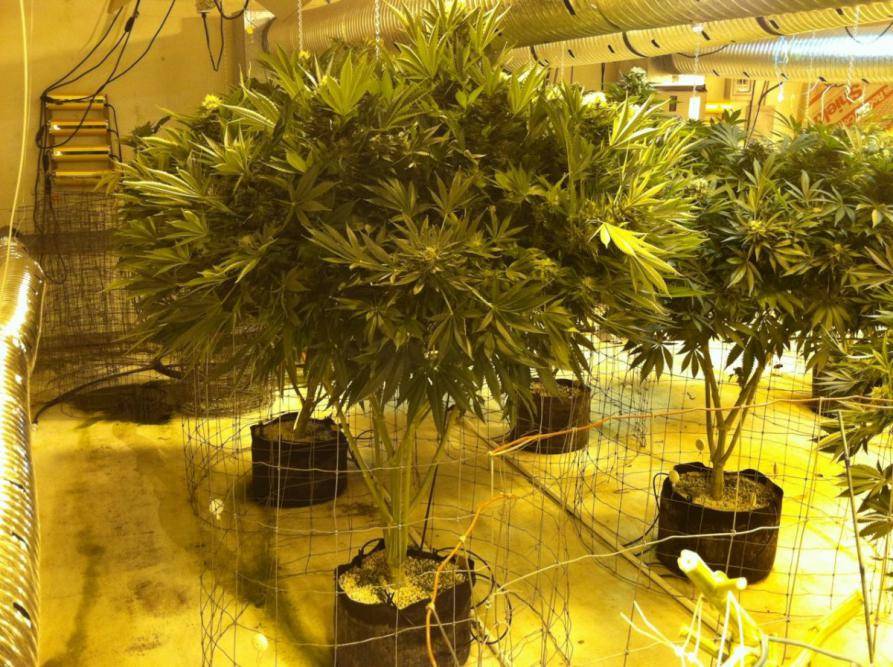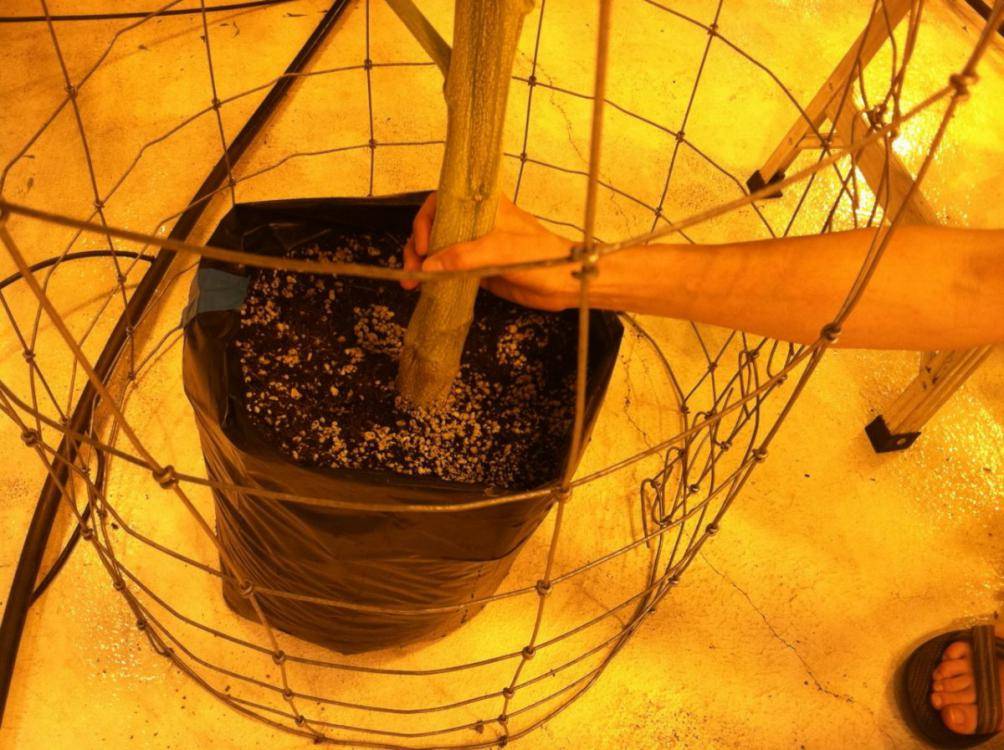Ibechillin
Masochist Educator
my bad double post...
Last edited:
got any pics!? ^haha just what this thread needed!
Shallow is where it's at.
4 inches, baby! (see 4 inch rule)
https://www.youtube.com/watch?v=7XvQqYQX9Qw
Very few plants in the plant kingdom spread laterally instead of vertically (depth). Plants (cannabis included) reach down deep to get their sustenance, water.
Very few plants in the plant kingdom spread laterally instead of vertically (depth). Plants (cannabis included) reach down deep to get their sustenance, water.
Very few plants in the plant kingdom spread laterally instead of vertically (depth). Plants (cannabis included) reach down deep to get their sustenance, water.
Exactly what I thought and how I usually looked for pots/made containers or beds. I've been off the boards and not into studying the growing scence for almost a decade and man a lot has changed I'm amazed how short and wide these beds are and what monster plants are beening growed....this old dog is definatly gonna try these new tricks
Very few plants in the plant kingdom spread laterally instead of vertically (depth). Plants (cannabis included) reach down deep to get their sustenance, water.

There is virtually no tested information that I can find on cannabis root systems so I thought I would relay the anectdotal knowledge that I have learned about this aspect of OD cannabis growing.
Just a foreword, this topic can be very important to OD growers but is seldom considered when planning a grow. Those growing in containers can make a fatal decision to choose a strain with agressive roots or plant a full indica in a low lying area where their intolerace of excessive moisture around their roots is quickly observed. Some sativa's however, don't seem to have any concern at all with occasionally soaked soil. Knowing the characteristics of the roots can be very important.
Just as a general rule, most of the strains I have grown have had small to moderate root systems and I feel most strains probably fall into that category. By small, I mean they would easily fit into a 2-3 gallon container without really binding up. Moderate root development fits in about a 5 gallon bucket, even though they exceed the buckets width latterally, they easily fit if soil is removed.
There are certainly exceptions to these generalizations, and as many as there are strains I suspect.
100%-90% indicas and afghanis. - Although there are some big full indicas, many are compact with small root systems. Single colas, small statured branched plants under 4-5' dont have lots of weight to support ,dont suffer wind damage easily as they are not high profile and make great container plants and grow well outdoors in areas that don't have deep soil. I have one site where at 10" a clank is heard when one hits the solid rock shelf. These plants tolerate this condition well and grow without any problems there. Anytime big roots could be a problem, these are the strains to look at.
100%-90% Sativa's. - My experience with full sativas is less but I do believe that sativa root systems are somewhat dependent upon the point of origination of the native parent strains. I have come to believe that equatorial sativas have a wide snowshoe type of system but not necessarily a big tap root. Many don't have huge yields or weighty buds and even though they may grow tall, they don't offer much resistance to the eliments.
I think there is another group that originates further from the equator that shows variation in root systems depending on climate and rainfall and often do express a significant tap root. I know that Mexican sativa has a very different root system than columbian.
Hybrids: This category of plants have root systems that are all over the board and unfortunately, this is what many of us are growing. They range from KC-33 which has an agressive vigorous root sytem that can send a tap root to 4' and if it does blow over, roots just develop on the side of the root ball and the plant takes off again, contrasted against Early Riser, which has picked up an indica yield in the cross, but posseses a typical equatorial sativa root system that has difficulty supporting the heavy indica flower development that is wasnt intended to support and blows over in the wind easily and doesn't recover well.
Hybrid crosses can result in any combination of traits from the parents. While smaller statured hybrids still seem to have smaller root systems, there are some big yielding plants with small root systems that won't handle drought or wind, and some big strains with little yield with a deeper tap root than normal. There can be a lot of variation in root structure in the larger hybrids.
Generally, it seems to me that the biggest, deepest root systems come from hybrids where both parents were big and the growth is sativa dominated. These strains seem to have the wide lateral aspect from the sativa but the tap root that came with the big indica has also been hybridized and is exaggerated in size. It is impossible to know what kind of root development will be seen with mixed breeds such as 4 ways or crossed hybrids as they can recieve traits from any or all of the parents in the line.
I dig up roots as I use the same holes year after year. I think the lateral roots are probably there spreading out to the width of the plant or to the "drip line", just hairlike and not really visible. In fact, Ive seen some sativa strains that have a shallow, very fine mass of roots up to 4' in diameter but extending into the soil no more than a foot, with no real tap root at all. As far as your plants blowing over with yield weight, that may be a result of breeding/strain. You wouldn't believe the number of strains I have abandoned due to that one effect.
I think the greatest tap root size is seen in large, sativa dominated growth for an sativa/indica hybrid. Ive found these strains to have a wide variety of root systems from shallow and wide to deep rooted plants. I have often considered that soil conditions may have a great impact on the extensiveness of any root system simply because of the fact that when i plant a very big strain, the root system will be similar to the other large annual native weeds that grow around them and many of them extend well beyond 2' deep. I have one location in a river bottom that floods each winter and drops 6" of new sandy rich topsoil. The earth is black, soft and full of earthworms. Ive grown numerous strains in the area, but only those large sativa/indicas will thrive. Every other category blows over in the soft black dirt.
I don't think too many people grow big plants anymore. As i often grow in single plant sites, I find them advantageous to grow. They're different in a number of respects, including root systems.
I used to believe that variation was limited to large sativa/indica
hybrids but i grew 2 strains last year that had no tap root. None.
These were small statured indica's, but most cannabis i believe does have a tap root even if small.
Its really one of the reasons that i believe most growers would benefit greatly from finding a few strains they like and then comming to know the strain and its characteristics, rather than growing one unfamiliar strain after another. I have found it takes about 4-5 years of growing a strain to really learn how it will respond under any given condition and what its real attributes are.
Ive seen lots of variation in roots systems over the winter. The roots of the sour bubble i grew fillled up every inch of the pot, regardless of the size pot. The massive roots on sb dont transfer into plant health as sour bubble is weakish and freakish.
the joeys Sugarberry was a much larger plant than sour b, but had a much smaller root system and didnt crowd its containter at all.
I transplanted sensi star, white Rhino and Great white shark all on the same day, and a week later the shark roots were hanging out of the pot while the other 2 strains had no problems."
"Perhaps not the most huge of plants, but still a fair size (8ft and 9ft), these two Rombolts I grew in 2013 were in newly dug/amended beds that I had dug down to 4-5ft and removed any sizable stones from:

Here are the roots I dug up, and they only went down 1-1.5ft - no obvious primary tap-root to speak of.

I don't know why the roots wouldn't want to get bigger/go deeper for sure, but it could well be because they were all started in containers or because they were not allowed to get too dry (although I have always tried to keep watering to a minimum)."
Wish I had the article in easy reach, but most hemp research concludes that roughly 80% of the root mass will reside in the top 12 inches of soil. Re: supporting your observations, neon.
These weren't grown in large smart pots; 65 gallon pots have a 32" diameter. But thought this comparison might help someone.
super lemon haze I harvested last fall. Root ball mass was roughly 18" across. Small diameter feeder roots extended to the edge of the 65 gallon smart pot, but the bulk of the root ball was fairly unimpressive.
the panama Root ball mass extended most of the way to the edge of the 65 gallon smart pot (~28 inches). A bit more like what I expected, but still not as big as I imagined it would be.
SLH canopy was 5'-ish wide and the Panama was right at 4.5'.
The SLH yielded ~30% more than the Panama (with a root ball half the size), but that's likely just genetics (bushier plant, more bud sites?).
.Outdoor roots.

Thereallenny said:I got about 2.5 lbs. per plant last season and I was in 15 gallon plastic containers. All about the genetics for yield and I wouldn't recommend growing in a 15gallon. I had just moved and I have less space so I thought It would keep em small but all it did was not make them huge but still very decent size. Tangie from seed was the strain.
Correct. But cloned plants not so much, they do not have a dedicated tap root.
I grow both from seed and clone and there is a difference!
I have found many female individuals that I could not reverse by stress, as well as a few that could not be reversed with STS. Why I do not know for sure.
No new news on tests for intersex be they stress induced or just intersex regardless of the environmental conditions. I am still hoping this will happen soon as the DNA tests for male seem to work fine but to assume all that are not male are female is a big problem when some of the "females" are intersexed and cause the same problems as a real male.
Who wants to have to examine all plants daily to assure the seeds started are true female and not just an intersexed female that DNA tests as a female but is not without problems.
Remember that when you DNA test males and then assume all the other plants are female that will include intersexed and monoecious, they test as Female even if they express more male flowers then female flowers.
-SamS
I have been concerned with the the amount of female pollen chucking going on in the last decade. Well not chucking that's a bit harsh; but prolific use of female pollen. We found out about colloidal and stress techniques in the UK in 1990. But the XX pollen was only used to preserve a female clone in seed form. Not for crosses. I had RKS (skunk#1) and had female seeds for years.
I grow elite clones for the masses. Most will easily throw a few anthers. They pollen stays "hard" for days and they can be easily plucked out.
So is that where we are? How has it become acceptable to have great weed with a few nanners to pluck every round? So someone gets a bagseed form my "gelato" and goes on to grow and clone that compromised genetic material !!
I personally love males. I have had resinous males. And males that stacked flowers like a female.
I get better hybrid vigor from XY pollen. How about you?
I feel you on the prolific use of female pollen and agree totally on only selfing a clone for preservation.
There are breeders like Mr.Nice that only make regular seeds.
The real question is though, after many generations of XX crosses has it been documented and proven the offspring will hermaphrodite indefinitely even in a no stress environment?
Is there any solid evidence of loss of vigor from XX seeds?
Over the last 7 years ive grown out ~30 bagseeds and they have all been female. Of those bagseeds i found 3 of the most vigourous growing plants i have come across.
All 30 of them were flowered and at some point all were stressed by something. Ph issues, reservoir water temp, was on 400ppm well water and getting lockout, heat waves.
Interestingly not one of the bagseed plants ever tryed to hermie, never produced nanners late in bloom, or had any seeds.
In terms of breeding im still skeptical to use femenized pollen, but i have had good experiences this far it seems...
There is no solid evidence of Loss of vigor etc. as far as I know.
And selfed females do not always herm although I have seen some bad ones.
From a Landrace point of view a group of isolated females could have survived for decades through self pollination/preservation for all we know. And as Sam said some strains can't be reveresed so there is the other end of the spectrum too.
Maybe I am just old school and hence have a low opinion of female seed breeding?
If I have an elite female I want to preserve I cross in something very phenotypically different that I still consider good quality. Then I make F2's to "fracture" the phenotypes. I usually get a male with strong mother traits at this point. Cross him back to mommy. With patience and a few crosses back to mommy we get very close to the original clone.
Then, if we can be bothered, line breed to stabilize. Now we have close to the original clone with a butt load of vigor.
But that is a two year deal...
I don't think there is a right and wrong perspective on XX pollen. And I am staying open minded.
Its surprising to realize some landrace strains literally could be derived from decades of hermanphrodism. Crazy to think its technically an evolutionary advantage in terms of survival in harsh environments Or maybe tropical sativa plants like Thai do it naturally not because of stress but to take advantage of the perfect growing environment? I didnt know some strains could not be reversed, that is vital information.
Theoretically in breeding plants with XX pollen if somewhere in the lineage of the plant(s) used is the trait immunity to reversing, some of the offspring could be immune to reversing as well.
This would most likely explain my luck with the ~30 bagseeds.
Are there different triggers for hermanphrodism in different landraces i wonder?
Like of all the landraces that can reverse, are some only prone to under certain conditions like drought or heat or just stress in general depending on thier home environment?
From my reading heat seems to be the main cause of selfing, but ive also seen torure chamber grows in hot closets of bagseeds that do just fine...a good friend of mine being one lol.
Selfing to S4 will cause inbreeding loss of vigor and many buried negative genes will be expressed, try for S5 or S6 and you are lucky to get functional pollen Dehiscence, I find sticky pollen that is viable but does not drop, so it is functionally sterile. You can use it with a q-tip if careful. I try to not make above S3's. It is hard to use STS to make all female copies of a female clone specially if a Poly-Multi-Hybrid, a selfed female clone of that type will segregate and act as an F2 population. So very hard to find one just like the clone mother.
-SamS
We found that any female clones that can not be stressed to express intersex flowers are unlikely to produce progeny that express intersex flowers. I am not referring to STS as a stress, it alters sex expression temporarily, it does not alter the genes.
We also found that using a Thai female clone that does express intersex flowers even without stress, when we used the pollen from the intersex flowers, they also produced all females and almost all were expressing intersex flowers, not surprising as like begets like.
We also found that a selfed single plant will lose vigor as it is inbred, each generation is worse and by S3 or S4 the plant will have serious problems like being functionally sterile, the pollen does not dehiscence it is just to sticky and while viable it must be collected with a Q-tip or another way to be used for pollination.
You can easily avoid the inbreeding by using two different varieties, one as the transformed pollen source and one the clone to be pollinated.
-SamS
Hi Sam. Are you talking about regular/feminised breeding here or selfing? Selfing can expose recessive genes which would otherwise stay hidden even under stress..
I was talking about both, selfing and using transformed females to male for pollen to use on a completely different female variety. I did not see intersex problems with selfing a single plant or making S4 from a single plant line, the S4 were all screwed up from inbreeding and loss of vigor and resistance but we did not see intersex problems. As long as the females used were not found to express intersex if tested with all kinds of stress.
-SamS
White Fire is a famous cross. Fire Og female x (reversed female) The White. Would it be the same if the other way around? It would be a great test. Natural males are an unknown factor (crap shoot) since they don't grow buds.
One way to test this is to take 2 stable but non related varieties (A and B). Take 2 clones off one female plant from one variety (A) and 2 clones off of another female from the other variety (B). Take 1 clone from each variety and reverse them onto the other variety (A-reversed x B, B-reversed x A). This way we will find out of there is some natural process that is different when DNA is donated via pollen or in the calyx.
It makes absolutely no difference which parent in a cross is male and which is female. The genetic potential of the offspring is the same either way. The only practical difference is the resultant seed size may vary depending on which parent is the female, and this is due to the size of the calyx on the female.
The phenotypes seen in the offspring from any cross or pollination are the result of the dominant alleles inherited from each parent.
Hope this helps.
I've done the double reverse and there was no difference in the offspring phenotypes as expected. The one difference was that seed size from the cross was different due to the maternal parents having considerably different sized calyx.
you can cross two female or cross two males by transforming one to the opposite sex, a transformed female clone to male will express pollen but it is still genetically a female, the same with males they can be transformed to female to make seeds.
Transforming males to a female will also allowing smoking of the male transformed to female expression or lab testing of the cannabinoids and terpenes they can contribute to progeny.
Regardless if the female is Haze or Skunk the f1 hybrids express the same general terpene and Cannabinoids, I have made hundreds and tested them.
There may be sex linked traits but this has not been proven in Cannabis.
Intersexed plants can be male or female. Males that are intersex can make seeds on themselves or on nearby plants.
One last point is plants do not just turn intersex because they have not been pollinated, they are born with the intersex traits, be they XY intersex or intersex traits that require stress of some sort to express the intersex. Both are inherited from intersex parents.
People confuse dominate and recessive genes with what a plant recieves from the parents, but do a prunett square with two palnts that have dominate and recessive genes for the same gene and you will see progeny have a crap shoot on what they receive. Depending on what the parents have Ww X Rr for example in the case of White and Red.
Plant genetics like Cannabis can be confusing as Cannabis is a dioecious obligate outcrosser and is a bit special. (90% of all flowering plants on earth have both sex, the remaining 10 percent have unisexual male and female flowers on the same plant (monoecious species) or male and female flowers on separate plants (dioecious species) they are the minority. Cannabis is one of the minority it is dioecious.
-SamS
I used Durban Poison as one of the 4 parents we used to create a THCV only variety 20 years ago, the THCV was not so high, only 1-2% but it was there. I also used a Thai, an Afghan and Calif Orange, they also had small amounts of THCV. after 4 years of seperately selfing these lines which raised the THCV %'s they were combined to make our THCV variety. To be clear the THCV % of the 4 parent lines were low in THCV, 1-2%, after selfing several years and combining the 4 parental lines we knocked that up to more then 10% with little to no other Cannabinoids. We also did that for CBC, CBG, CBDV, CBCV, CBGV, THCV, etc....I developed a THCV variety from scratch that was over 10% and with almost no THC more then a decade before this. We licensed the variety to GW Pharmaceuticals.
-SamS
.Chrondondalae said:well i thought we were talking trees hereended up with 2.25 in a 5 gallon grow bag on that one. botanicare readygro moisture mix feeding 4x daily.


i screwed up and left one of the control box timers on 20/4 at 12/12 flip. took me two weeks to catch it and had to role with it and an extra two weeks of veg. plants got huge, trimmed em up big time and got rid of a third of the plants. funny thing is got one of my best yields yet on that room. i usually use 10 gallon smart pots for plants that size.
probably around 6-8 weeks veg from clone.
11 days to go
40/60 canna coco/perlite fed 4x daily
h16,prime and massive then hh/moab week 7 and 8. all sorts of other little things along the way. on EJ grande finale, h16 prime and cannazyme at the moment